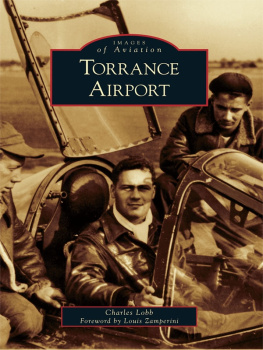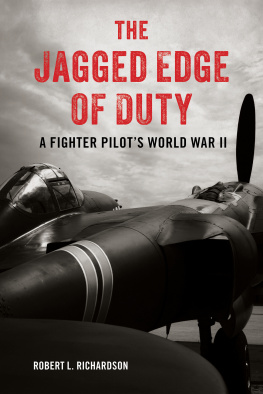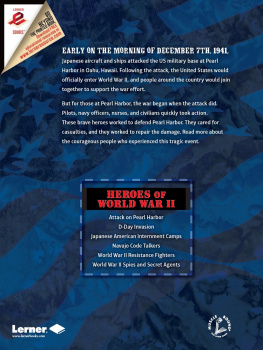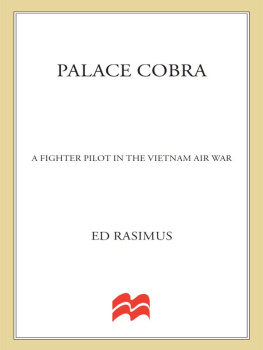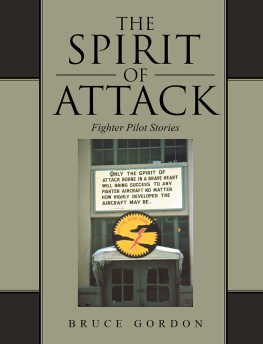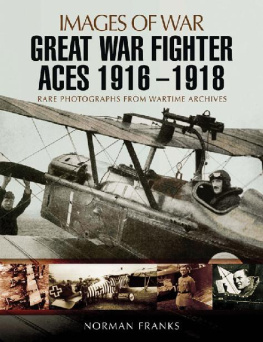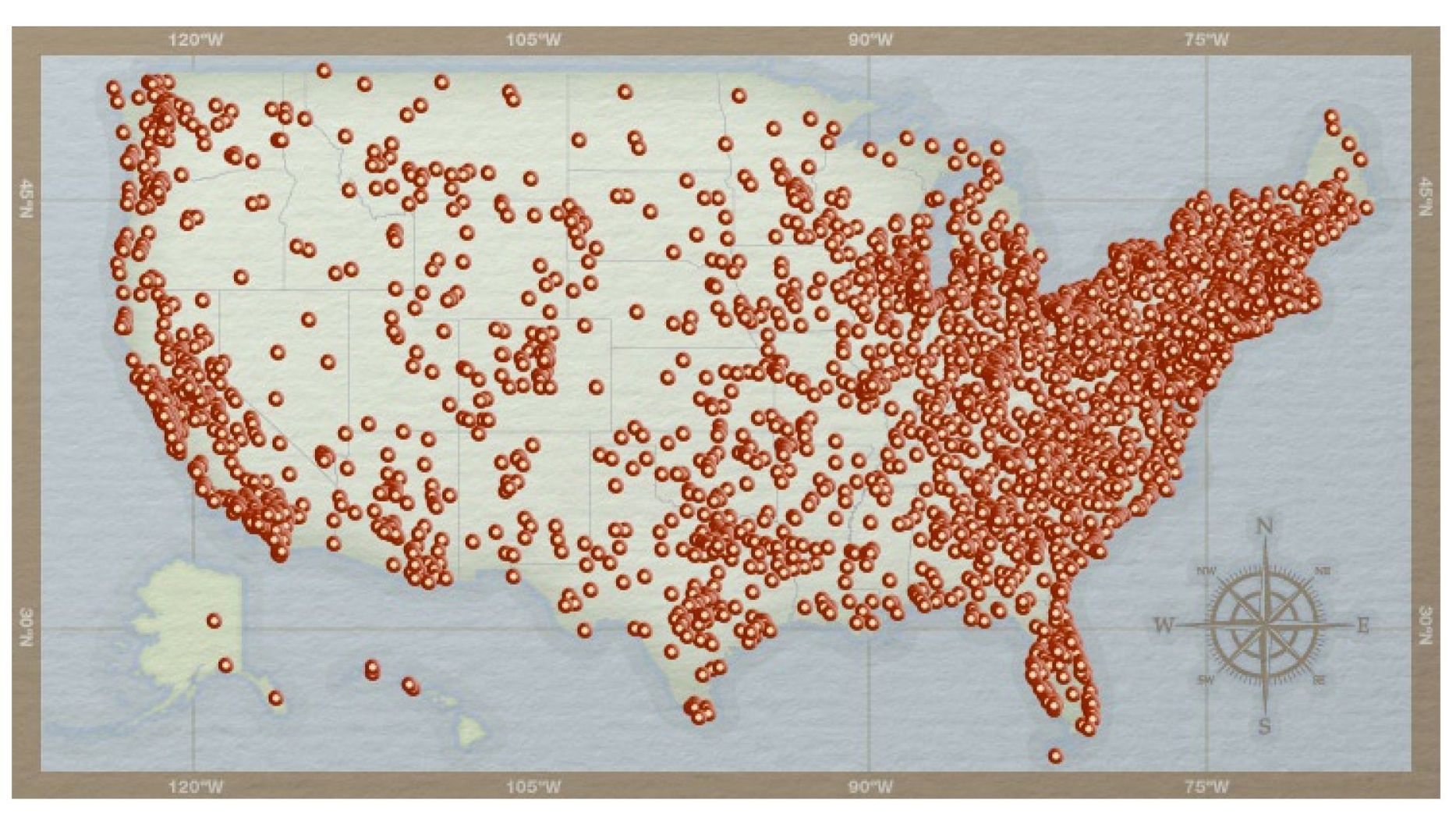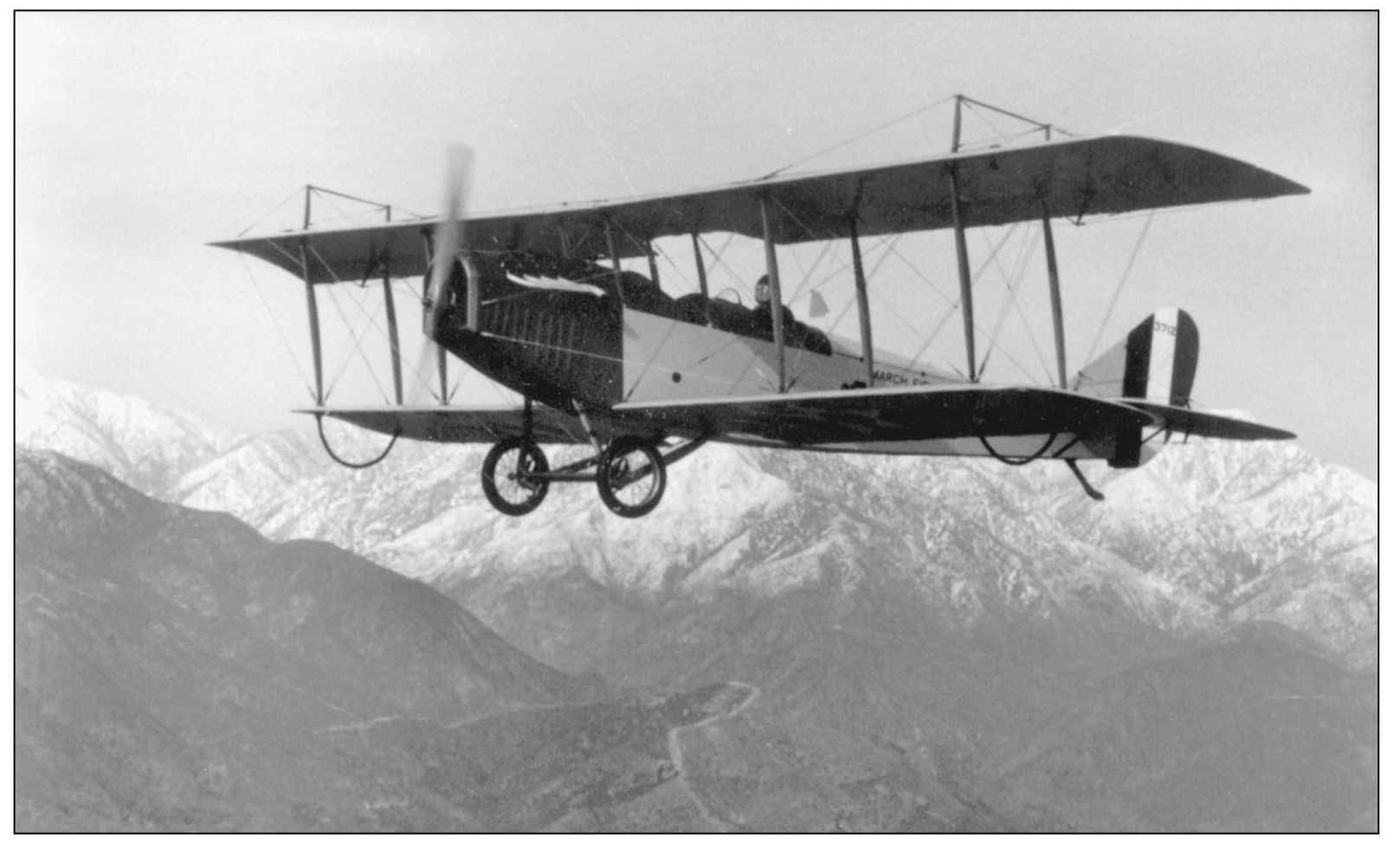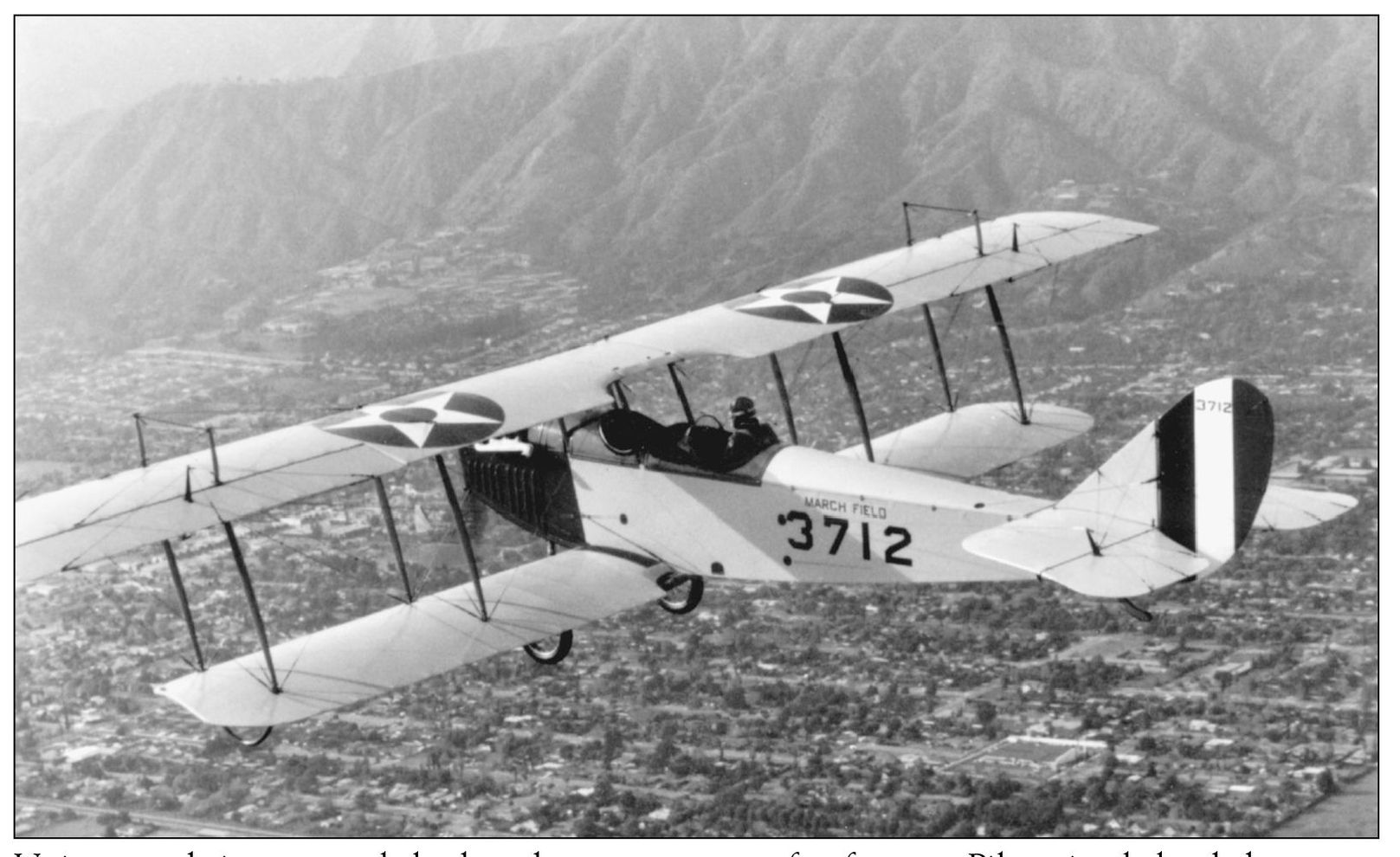ACKNOWLEDGMENTS
Ten years of research and hundreds of contributions are almost impossible to acknowledge properly. So many friends unhesitatingly contributed their time, scrapbooks, photographs, clippings, and recollections. Fighter pilots generously granted interviews and extended invitations to their squadron reunions. Albert Scott of the East Essex Aviation Society provided guide services at Wattisham Airfield in England. Forty slide presentations throughout the Los Angeles area frequently inspired spontaneous ideas from the audience.
My sincerest thanks to each and every one of the major contributors listed below for their time, photographs, and memories, which frequently led to rare and intriguing material.
Nancy Clinton, whose annual air fairs at the Torrance Airport and friendship for many years, inspired this book. Dick Gama and Archie DiFante of the Air Force Historical Research Agency (AFHRA), Maxwell Air Force Base, Alabama, furnished five rolls of 16-mm microfilmed records and photographs. Dan Corrigan of Continental Graphics brought these microfilmed images to life. Photographer Paul Pohl of Montgomery, Alabama, pulled dozens of archived AFHRA photographs and re-photographed them perfectly. The National Archives at Laguna Niguel, California, allowed me to sift through two cardboard boxes filled with Lomita Flight Strip history. Roger Keeney and Iris Critchell both allowed me to pick their brains, file cabinets, and scrapbooks. And finally the Lightning Strikes newsletter of the National P-38 Association posted my request for information that brought a flood of responses from Lomita Flight Strip veterans.
I also acknowledge my deep indebtedness to all my friends on this project:
Bob Avakian, Nike missiles
Mike Blyleven, City Archives
Gil Ceferatt, P-38 Association
Virginia Doak, Doak Aircraft
Walter Drake, 434th pilot
Maria Gavin, television producer
Burl and Juanita Glass, 429th commander
David Harmon, photograph editing
Flamm Dee Harper, 434th pilot
Fred Hayner, 434th nose artist
Jack Ilfrey, 20thFG/55th Pursuit Squadron
Barbara London, WASP squadron commander
Ted Misenheimer, TOA photographs
Gus Morfis, Lomita research
Paul Nowatka, World War II history
Earl Ody, P-38 pilot
George Patik, 429th engineering
Bernard McNulty, 429th technician
Vinny Revis, Robinson Helicopters
Kurt Robinson, Robinson Helicopters
Karl Swindt, 20thFG/55th Pursuit Squadron
Bill Switzer, Bay Cities Airport
Anthony Turhollow, Army Engineers
Harry Waldron, LAAFB historian
Hub Zemke, 479th FG commander
Louis Zamperini, World War II survivor
BIBLIOGRAPHY
Published historical texts on the Lomita Flight Strip, Zamperini Field, the Torrance Airport, or the Torrance Municipal Airport, as far as is known to the author, are nonexistent. It is sincerely hoped that this publication may become an inspiration, a small sampling of the wealth of historical aviation material out there awaiting posterity to discover. A few published works that were helpful in providing additional historical material are listed below.
Alexander, Jesse. P-38 Lightning . Osceola, WI: Motorbooks International, 1990.
Boyce, Col. L. Ward, USAF (Ret), ed. American Fighter Aces Album . Mesa, AZ: The American Fighter Aces Association, 1996.
Davis, Larry. P-38 Lightning In Action . Carrollton, TX: Squadron/Signal Publications, 1990.
Elliott, Charles Jr., and Dennis F. Shanahan. Historic Torrance . Redondo Beach, CA: Legends Press, 1984.
Ethell, Jeffrey L. P-38 Lightning in World War II Color . Osceola, WI: Motorbooks International, 1994.
and Robert T. Sand. Fighter Command . Osceola, WI: Motorbooks International, 1991.
Hatfield, D. D., Los Angeles Aeronautics 19201929 . Inglewood, CA: Hatfield History of Aeronautics, Alumni Library, Northrop Institute of Technology, 1973.
Maurer, Maurer. Combat Squadrons of the Air Force World War II . Washington, D.C.: U.S. Government Printing Office, Albert F. Simpson Historical Research Center, and Office of Air Force History, Headquarters, USAF, 1982.
Olislagers, Robert P. Fields of Flying . Encinitas, CA: Heritage Media Corporation, 1996.
Schoneberger, William A., with Paul Sonnenburg. California Wings . Woodland Hills, CA: Windsor Publications, 1984.
Stafford, Gene B., and William N. Hess. Aces of the Eighth . Carrollton, TX: Squadron/Signal Publications, 1973.
Underwood, John. Madcaps, Millionaires, and Mose. Glendale, CA: Heritage Press, 1984.
Zamperini, Louis, with David Rensin. Devil at My Heels . New York: HarperCollins Publishers (first edition), 2003.
Find more books like this at
www.imagesofamerica.com
Search for your hometown history, your old
stomping grounds, and even your favorite sports team.
One
THE PREWAR YEARS
The history of the Torrance Airport was stimulated by the birth of aviation in California, beginning with the Dominguez Air Races of 1910 on land that is now part of the city of Carson. The first such event in the nation, the air races prompted half the population of Los Angeles to ride the Pacific Electric Red Car railway south to Dominguez Hills to watch the flying machines of Glenn Curtiss, Lincoln Beachey, and Charles Hamilton. Twelve-year-old Edmond Doak was inspired enough to launch what would later become a distinguished engineering career in aviation (see Chapter 4). Van Griffith built the Griffith Park Airport in 1911. Movie producer Cecil B. DeMille built Mercury Field in 1918 near Wilshire and Fairfax. Flying weather was good, surplus World War I aircraft were abundant, and aviation thus came of age in the 1920s. Clover Field at Santa Monica was dedicated in 1923, and the Blair Flight School in Culver City taught flying to Clark Gable, Jimmy Stewart, Ruth Chatterton, and Henry Fonda.
By 1927, 52 airports had sprung up in Los Angeles, 37 of these privately owned. Mines Field (now Los Angeles International Airport or LAX) hosted the National Air Races in 1928, 1933, and 1936. Aviation boomed in this barnstorming era, with no fixed base or governmental regulations. However while barnstormers thrived with plenty of ability and ambition, the general public saw these aircraft only as thrill rides. Speed, comfort, and safety were unknown until the Grand Central Airport in Glendale was dedicated in 1929, ushering in commercial airline service with Maddux Airlines and Transcontinental Air Transport.
As World War I ended, pilots returning from the war eagerly sought surplus Army Air Corps aircraft. The popular Curtiss JN-4D Jenny, with a 90-horsepower OX-5 engine, could be purchased for as little as $300. Pilots and would-be pilots bought them up and barnstormed across the southland. (Courtesy Roger Keeney.)
Unimproved airports rarely bothered anyone except a few farmers. Pilots simply landed on open farmland or wherever sufficient space was available and occasionally took off immediately if the farmer came running to collect a landing fee. Barnstorming became popular as the novelty and thrill of flying gained momentum. (Courtesy Roger Keeney.)

